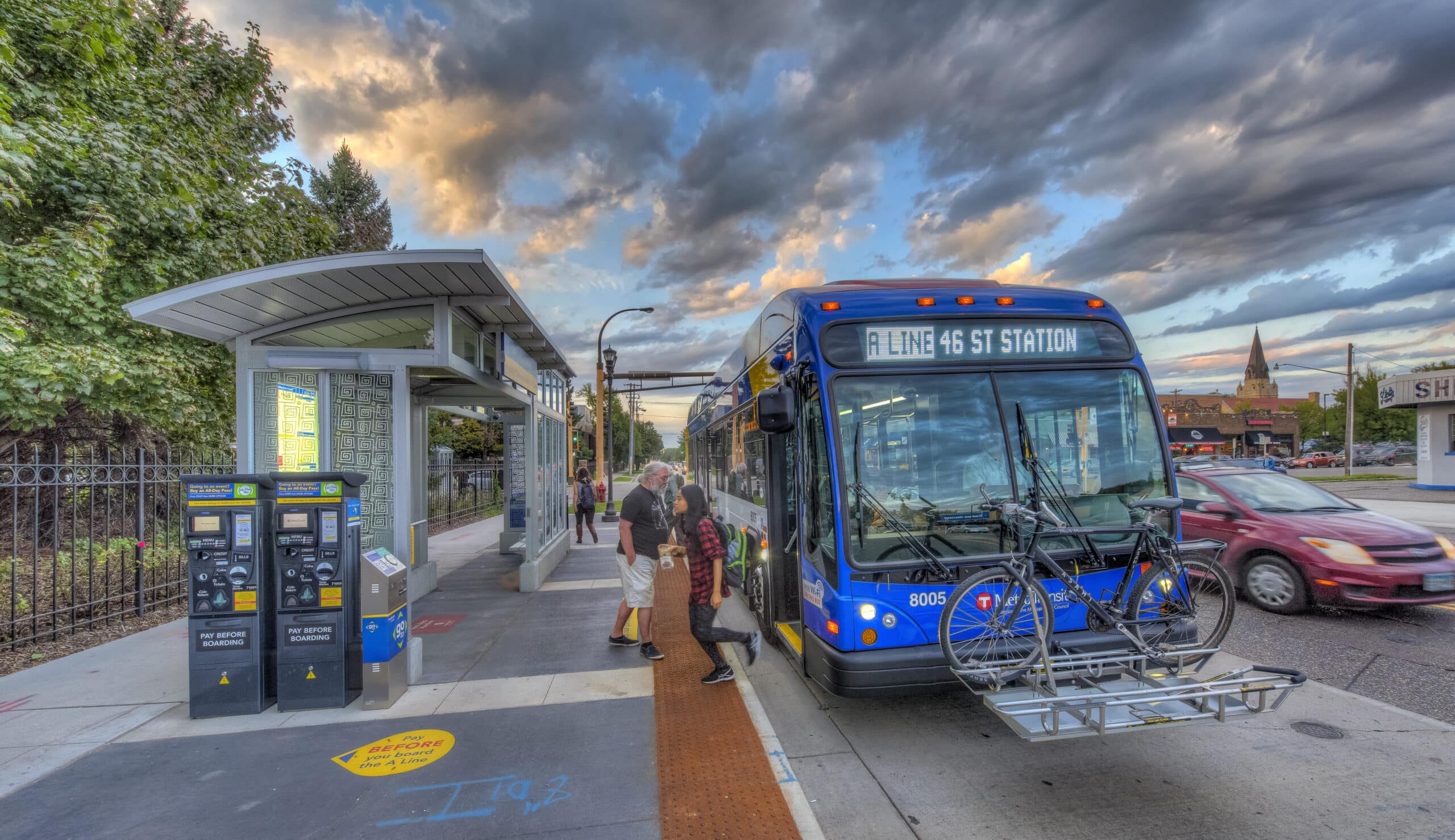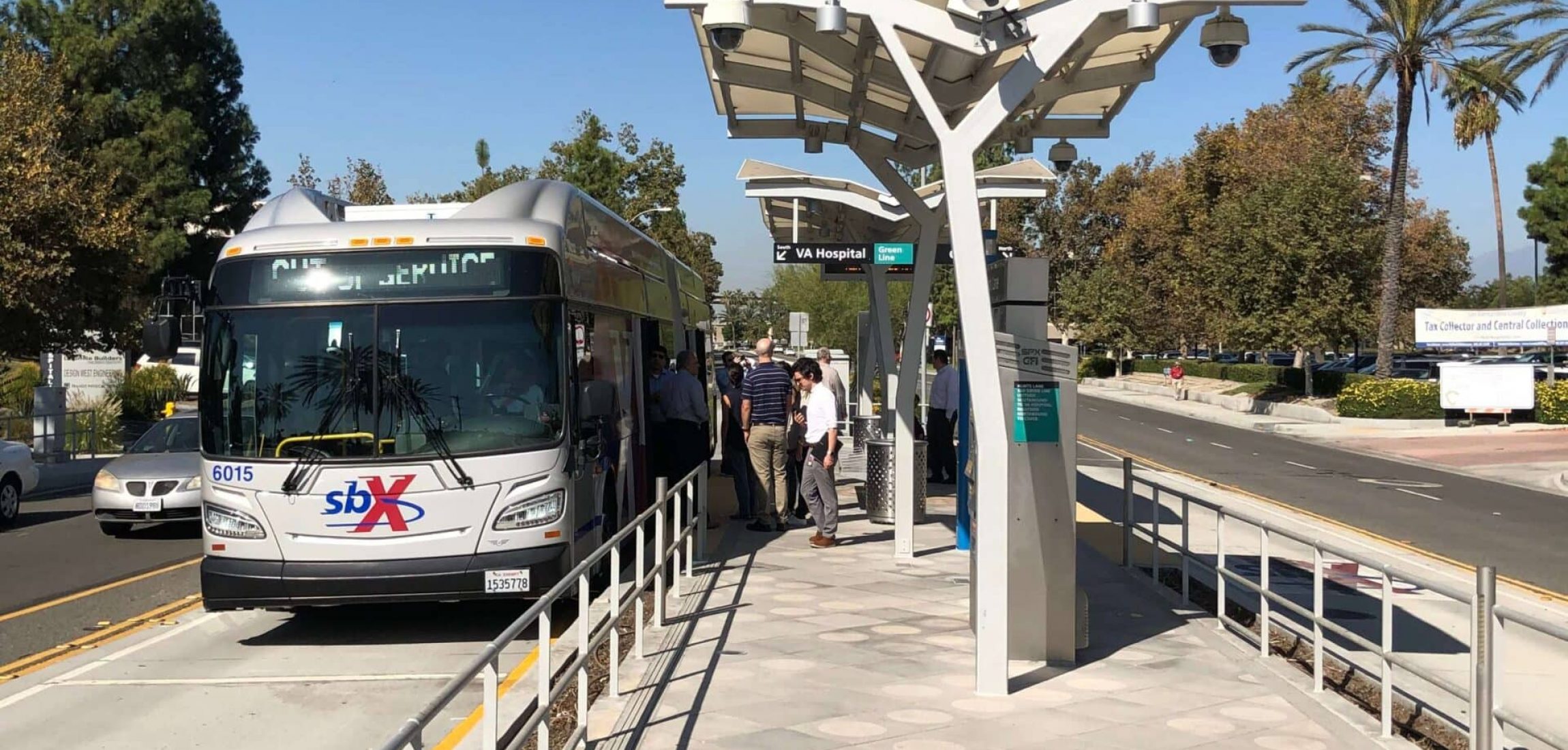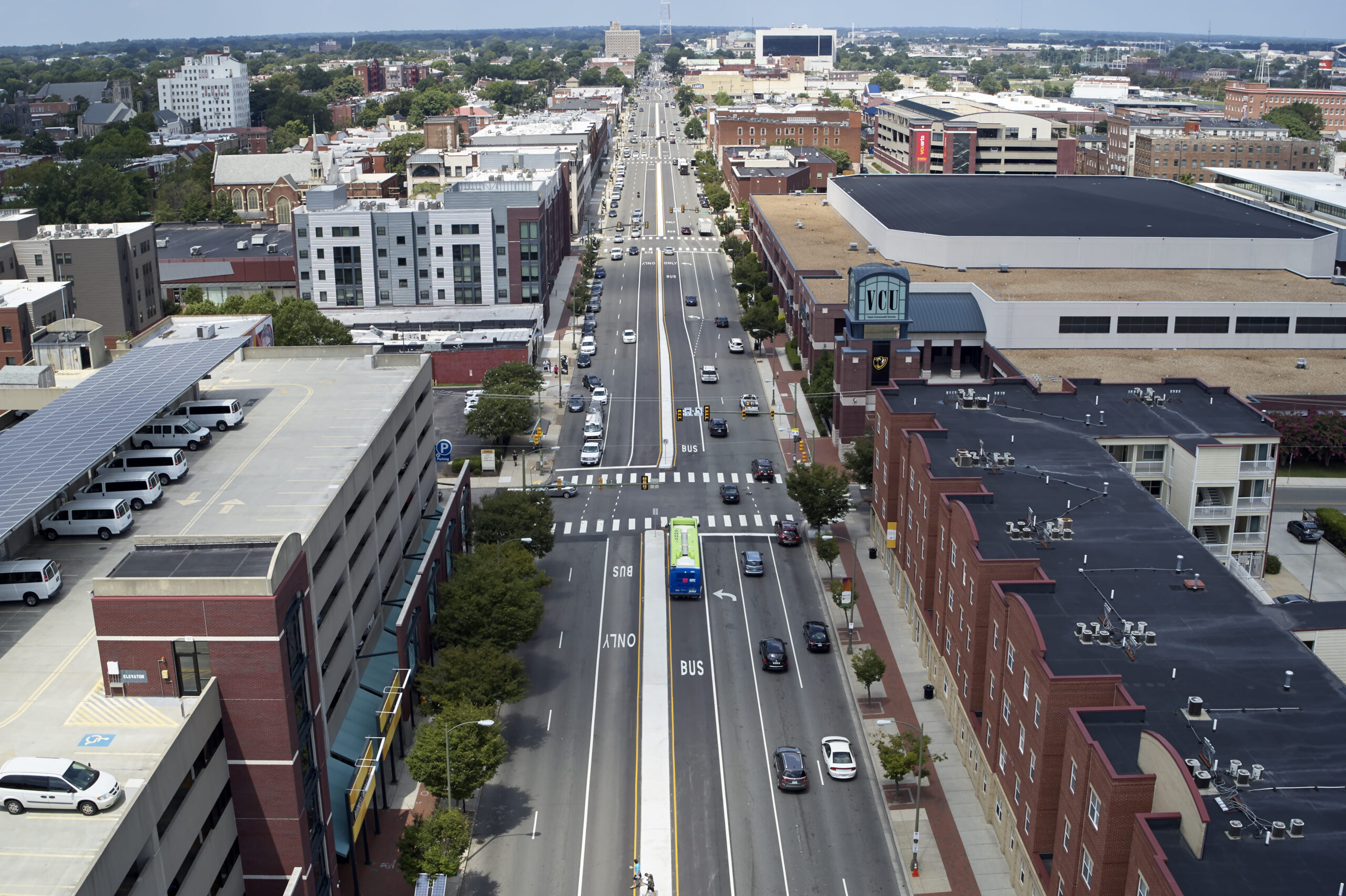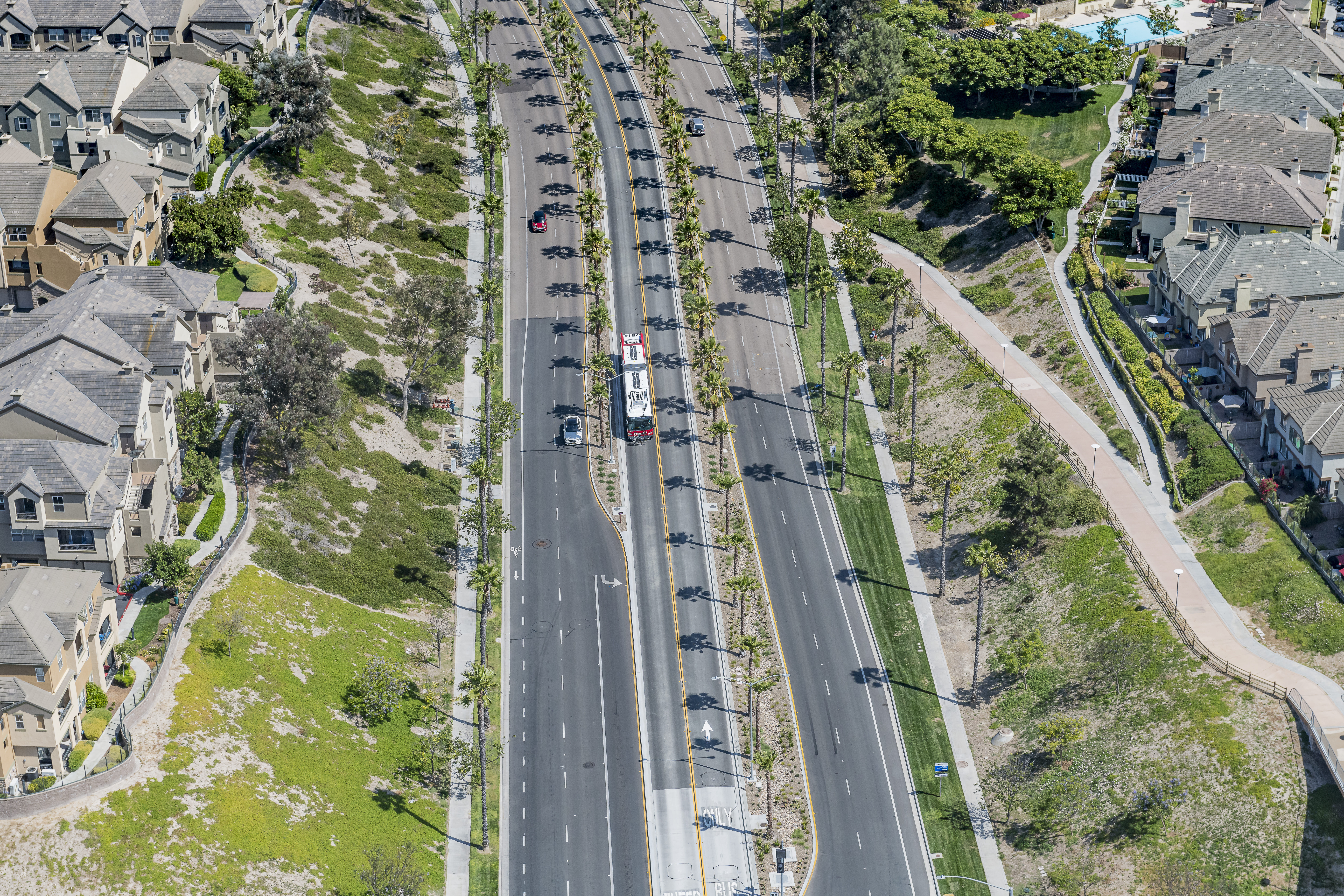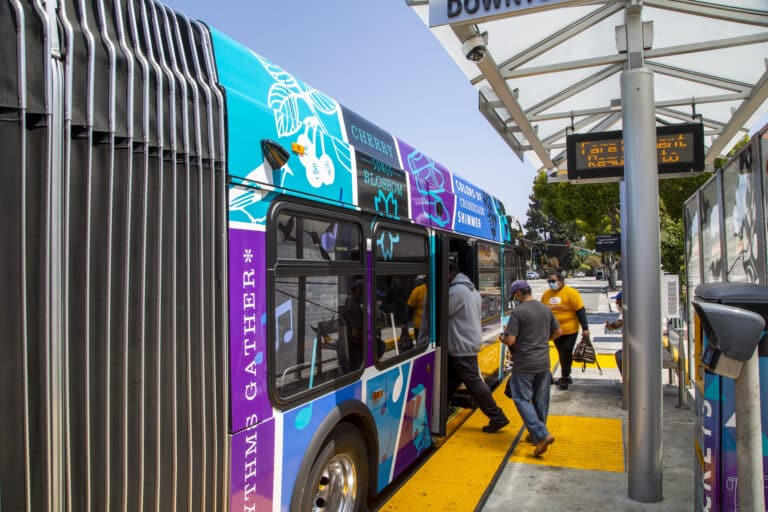- August 10, 2023
- Perspectives
Bus Rapid Transit Design: Key Lessons for Efficient Urban Transit
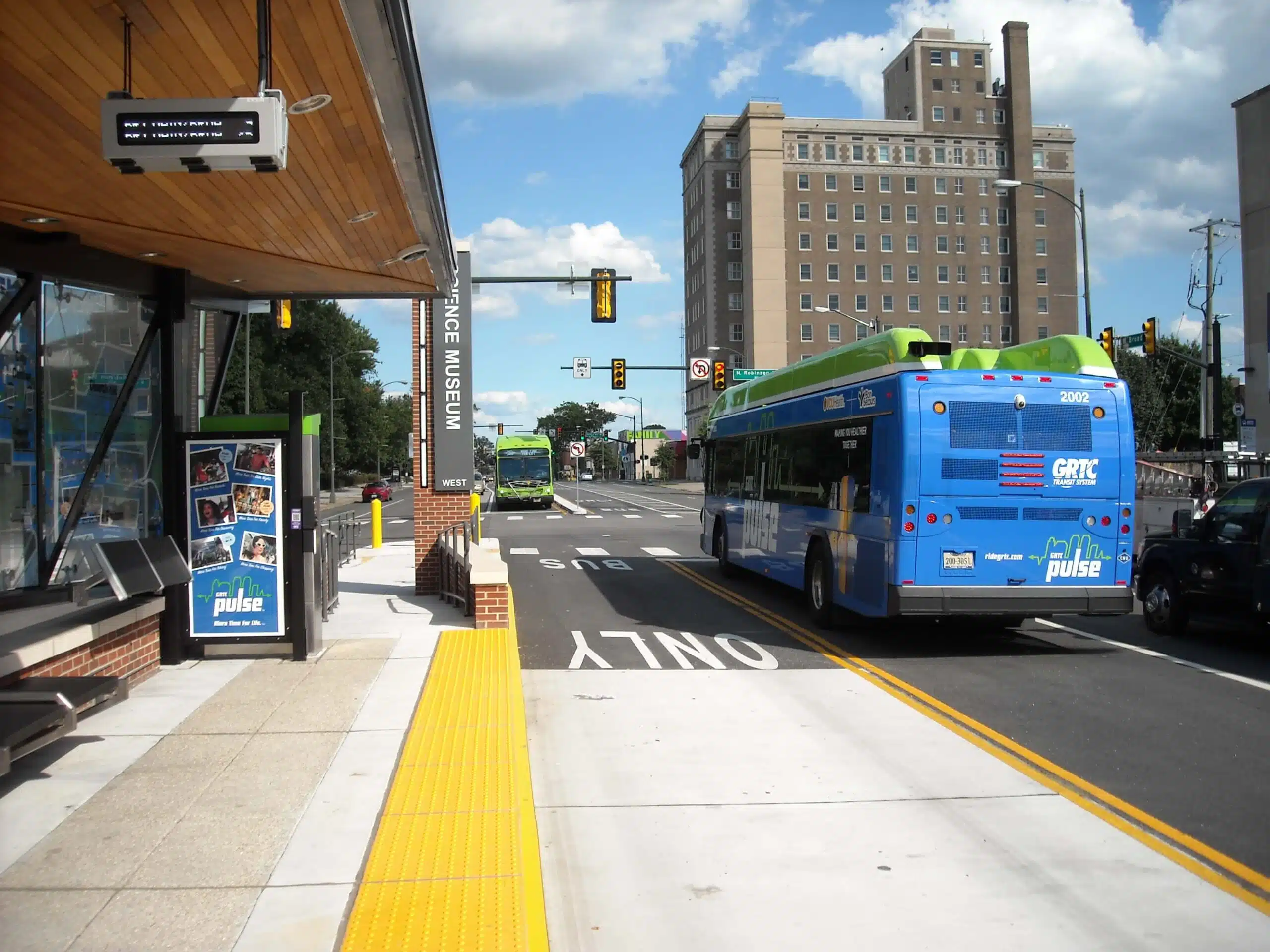

Ashley Lickliter, PE
Transit Practice Leader

Lisa Wall, PE
Transit Practice Leader
Bus Rapid Transit (BRT) systems are a cost-effective and efficient solution for urban transportation. However, designing and implementing a BRT system requires careful planning and coordination between project stakeholders. In this article, we will highlight our top BRT design lessons from successful projects nationwide, including GRTC Pulse BRT in Richmond, VA; MATA Innovation Corridor BRT in Memphis, TN; METRO Gold Line BRT and METRO A Line BRT in Minneapolis, MN; MARTA Summerhill BRT in Atlanta, GA; and South Bay BRT in San Diego, CA. Understanding these considerations early in the project development process can mitigate delays and additional costs, allay stakeholder and community concerns, and get your BRT system moving.
Parking Challenges and Creative Solutions
Accommodating parking and loading while providing safe and efficient BRT service can be challenging in constrained urban environments. Early communication with impacted businesses and residents is critical to address concerns about losing on-street parking. Several creative solutions can be employed, including reconfiguring roadway cross sections to make effective use of the curb-to-curb width, relocating parking and loading to adjacent side streets, or evaluating opportunities for shared off-street parking. Another solution is to establish park-and-ride facilities near BRT stations, encouraging drivers to utilize the BRT system instead of driving. Thoroughly understanding the benefits and drawbacks of these solutions enables you to select the most suitable approach for each unique corridor.
Station Platform Height Considerations
Another critical lesson is the direct relationship between station platform height and the proposed BRT vehicle. We cannot overstress the importance of not assuming all platform heights will work with all buses. Instead, designers should carefully consider the types of vehicles that will be used for BRT service and ensure that platform heights are compatible. If platform height is not properly considered, buses may need to be modified or even replaced.
For instance, the METRO Gold Line BRT in Minneapolis, MN, implemented 10” platform heights to allow buses to kneel and provide near-level boarding at the front door, while GRTC Pulse BRT in Richmond, VA, was developed to provide true level boarding with a 15” platform, which required retrofitting doors on their BRT vehicles due to conflicts between the platform and a steep roadway cross slope at a critical Downtown BRT station. Taking platform height into account during design avoids potential operational challenges.
Early Focus on BRT Technology and Communication Components
BRT systems require significant technology infrastructure for service reliability, safety, security, and passenger comfort and convenience. Infrastructure typically includes CCTV security cameras, fare collection equipment, real-time passenger information signage, fiber optic communications, and Transit Signal Priority (TSP). Initiating discussions about resource sharing at an early stage can be beneficial if project partners have an existing communications network or desire to receive CCTV video feeds from BRT stations.
Successful examples include the METRO A Line BRT, which used a combination of cellular modems and existing municipal-owned fiber optic networks as a cost-effective solution for communications, and MARTA Summerhill BRT, where a resource sharing agreement among multiple agencies facilitated the use of fiber optic communications along the BRT corridor. Sharing resources provides benefits to all agencies and allows connectivity and remote monitoring abilities for traffic signals and BRT stations.
Navigating Transitions Between Guideway Types
Transitions between guideway types, such as mixed flow to dedicated bus lanes, and vice versa, are not always easy to design or implement. There are several reasons for this—dedicated lanes require additional roadway and traffic signal infrastructure, such as queue jumps, and mixed flow lanes require careful coordination with other roadway users, such as right-turn vehicles, delivery vehicles, and cyclists. Consider transitions and plan for them early in the design process to ensure that infrastructure and construction requirements are met.
To achieve smooth and efficient transitions, consider these three core principles:
- Coordinate transitions with signal placement. By strategically aligning transition points with signal locations, you can optimize traffic flow and minimize disruptions. This coordination allows for efficient movement between mixed flow and dedicated bus lanes, reducing delays and improving overall system performance.
- Allocate adequate space for transitions. Transitions require sufficient space for buses to maneuver and make the necessary lane changes. Even at signalized intersections, it’s essential to provide ample room for buses to navigate the transition smoothly. By incorporating generous maneuvering space into the design, you can avoid bottlenecks and ensure safe and efficient transitions between different guideway types.
- Consider transit-only signal phases. In certain scenarios, it may be necessary to implement transit-only signal phases specifically designed for facilitating transitions. These dedicated signal phases grant buses exclusive right-of-way during the transition, minimizing conflicts with other traffic movements. By implementing transit-only signal phases, you can enhance the efficiency and reliability of transitions, optimizing the overall performance of your BRT system.
Station Platform Orientation Considerations
One of the key benefits of BRT is its flexibility to adapt to different environments. This includes implementing different guideway configurations (center, side, mixed) in constrained areas and adjusting platform orientations.
Generally, the preferred location for platforms is the far side of intersections. However, there are many factors that should be considered when determining optimal placement:
- Physical constraints: Can a platform physically fit in this location?
- Right-of-way impacts: Will more right-of-way be required to accommodate the platform?
- Pedestrian movements: Is there enough space for pedestrians to walk around the platform or will they need to walk through the platform area?
- Bicycle movements: Are there bike lanes or other facilities that need to be integrated into the station area?
Connections to other transit services: Is there a way to provide a more direct connection between different transit services? - Accessibility: Have you considered the needs of visually impaired individuals and ensured consistency with platform configurations throughout the corridor?
Coordinate with Project Stakeholders
In addition to reasons already mentioned, early coordination with project stakeholders, including local government agencies, roadway authorities, private developers, community groups, and utility companies, is vital for successful BRT projects. Involving stakeholders at the beginning enables their needs and concerns to be addressed, fostering project support. Additionally, early coordination facilitates collaboration opportunities, cost-sharing possibilities, schedule reductions, and additional community benefits like roadway or sidewalk reconstruction, addition of bike lanes, or utility upgrades. Failure to coordinate with stakeholders can lead to project delays, increased costs, and community opposition.
Designing a Successful Bus Rapid Transit System
Designing and implementing a successful BRT system requires careful planning and focused collaboration with stakeholders. By learning from our varied experiences nationwide, planners and designers can ensure that BRT systems are efficient, effective, and meet the needs of the community. By following these lessons, BRT systems can provide safe, reliable, and sustainable urban transportation.
About the Authors

Ashley Lickliter, PE
With more than 20 years of national experience in transit planning, design, implementation, and operations, Ashley is Kimley-Horn’s BRT subject matter expert. She has supported more than 20 BRT projects nationwide and understands the multiagency and multijurisdictional efforts required for successful BRT projects. Part of the Leadership APTA Class of 2020/2021, Ashley’s outstanding contributions to the transportation industry also earned her recognition as one of Engineering News Record’s 2019 National 20 Under 40.

Lisa Wall, PE
Lisa has extensive experience working on complex transit projects across the nation, dedicating her entire career to planning and implementing transit initiatives. For more than 15 years, she has focused primarily on BRT implementation. She has successfully led initial planning through final design for over 15 BRT projects nationwide. Notably, Lisa played a key role in the implementation of the first arterial BRT, METRO A Line, and the first dedicated BRT, METRO Gold Line BRT, in the Twin Cities.

